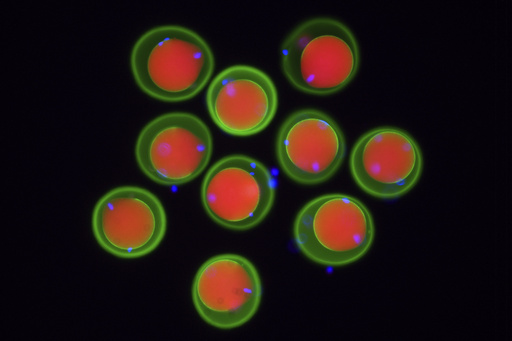A new chapter of life begins with the fusion of sperm and egg, yet the intricacies of this process have remained largely elusive. Recent research conducted by scientists in Austria sheds light on this phenomenon, revealing that fertilization operates on a lock-and-key principle across various species, from fish to humans.
According to co-author Andrea Pauli of the Research Institute of Molecular Pathology in Vienna, the study uncovered a fundamental mechanism shared among vertebrates. The research team discovered that three specific proteins on the sperm’s surface create a key structure that unlocks the egg, enabling the sperm to attach effectively. Their research, which includes studies involving zebrafish, mice, and human cells, illustrates how this biological interaction has endured through millions of years of evolution. These findings were published in the journal Cell on Thursday.
Previously, scientists were aware of two proteins involved in this process: one on the sperm’s surface and another on the membrane of the egg. Collaborating with international colleagues, Pauli’s lab utilized Google DeepMind’s artificial intelligence tool, AlphaFold—celebrated with a Nobel Prize earlier this month—to identify a novel protein critical for initiating the first connection between sperm and egg. The team successfully demonstrated how this mechanism operates in living organisms.
Despite these advancements, researchers still seek to understand how sperm penetrates the egg after initial attachment, an area they plan to investigate next. Pauli noted that the research could eventually yield insights into infertility issues and lead to the development of new contraceptive methods.
This study also highlights potential pathways for creating male contraceptives, as pointed out by David Greenstein, a genetics and cell biology expert from the University of Minnesota, who did not participate in the research. He emphasized the significance of this year’s Nobel Prize in Chemistry in relation to the study’s findings.


